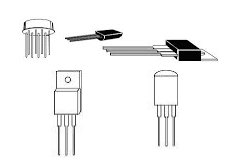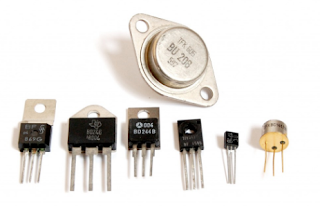IC (Integrated Circuit) is an electronic device made of a semiconductor material . IC is the forerunner of a computer and all kinds of devices that use other micro-controller technology .IC found in 1958 by an engineer named Jack Kilby , who works at Texas instruments . try to solve the problem by thinking about a concept incorporating all electronic components in one block made of a semiconductor material .
Amazing.....
The discovery was later called
IC (Integrated Circuit) or the then commonly called chips. Some time after that
, Robert Noyce , who worked at Fairchild Semiconductor Corporation , found the
same thing , although they are working on two different places .
Since then a lot of research
being done to develop the IC ( integrated circuit) until today. A founder of
Intel , Gorden Moore , in 1965 estimated that the number of transistors
contained in an IC will increase 2 times every 18 months.
This can be seen in the development of IC , a 64 - Mbit DRAM was first on the market in 1994 , consists of 3 million transistors . Intel Pentium 4 microprocessor and consists of more than 42 million transistors and is approximately 281 ICs contained therein .In fact , based on the International Technology Roadmap for Semiconductor ( ITRS ) , expected to be available a chip consisting of 3 billion transistors in 2008 .
IC itself is used for a variety of devices , including televisions , mobile phones, computers , industrial machinery , as well as a variety of audio and video equipment .
I. SSI (small - scale integration ) : maximum 100 chip with electronic components .
III . LSI (large - scale integration ) : 3,000 to 100,000 chips with electronic components .
V. ULSI ( ultra large - scale integration ) : chips with more than 1 million electronic components .
Definition of IC
IC shape can vary , there is a 3-legged for example LM7805 , there is nothing like a transistor with a foot lot for example LM741
.There is also a form of IC resembles a comb ( single in-line ) , the other is a rectangular shape with the legs are on all four sides , but most IC -shaped dual in line ( DIL ) .
A group called IC linear IC , such as IC regulator , Operational amplfier , audio amplifier , and so on . Meanwhile, another group called IC digital IC eg, NAND , NOR , OR , AND EXOR , BCD to seven segment decoder and so forth .
Numbering TTL done with 2 , 3 or 4 digit number followed its prefix , eg 7400 , 74 192 and so on. The letter , which is between the prefix and suffix indicating its subfamily . Eg AS ( Advance Schottkey ) , ALS (Advanced Low Power Schottkey ) , H (High Speed) , L (Low Speed) , LS (Low Power Schottkey ) and S ( Schottkey ) .
When compared to the circuit using the transistor circuit uses IC , IC tend to use more practical and ore costs are relatively mild .

















